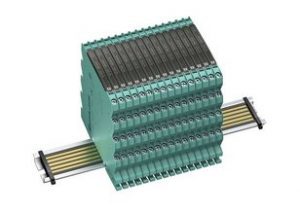 PIC’s advice on how to find the best signal conditioner
PIC’s advice on how to find the best signal conditioner
June 20, 2018 REDWIRE is news you can use from leading suppliers. Powered by FRASERS.
Posted by Process Instruments and Components Inc
Our main focus is to provide solutions dealing with hazardous area processing of paints, chemicals, and other flammable... Read more
Subscribe
Free REDWIRE e-newsletter

Process Instruments and Components (PIC) supplies signal conditioners by Pepperl+Fuchs.
The most efficient production facilities depend on the reliable transmission of signals between field devices and process controllers. According to Process Instruments and Components Inc. (PIC), a leading Canadian industrial-controls distributor, good-quality signal conditioners can be a critical tool here, as they convert these electronic signals into an easily readable format, providing users with the key data they need to keep operations running smoothly.
What to look for
Signal conditioners have varying capabilities, depending on the supplier. There are certain characteristics to look for in a signal conditioner to ensure it’s up for the task. These features include first-class isolation quality, maximum permissible ambient temperature, minimum height and width of the module, and robust mechanisms.
- Isolation: Good isolation is one key feature, as it helps prevent interference in the signal transmission from the field device to the process-control system. Choose a device from a manufacturer that has experience developing and manufacturing isolated barriers for hazardous areas. This is key because good isolation quality is essential in hazardous areas. The products used here must meet stringent standards and pass various external tests.
- Temperature: When selecting a signal conditioner, it is important to look for a unit with low self-heating and a relatively high permissible operating temperature.
- Footprint: Size counts, too. Make sure the unit’s dimensions fit the space requirements. Consider both height and width. These days, a module width of as little as six millimetres is possible and, in fact, is offered by various companies. Keep the future in mind, too. When replacing or expanding, new signal conditioners must fit into the existing cabinet grid.
- Robustness: The mechanical stability of the signal conditioner’s housing is also important. Pepperl+Fuchs carries out Elmech tests to examine the mechanical properties of the devices according to specified standards. These tests, conducted in a separate, independent testing laboratory, involve subjecting prematurely aged devices to mechanical and climatic loads and then monitoring compliance with the relevant specification.
Where to get them
Pepperl+Fuchs manufactures a wide selection of signal conditioners with the key features that users are looking for. These products are available in Canada from PIC.
For more information, contact PIC.
Share
Posted by Process Instruments and Components Inc
Our main focus is to provide solutions dealing with hazardous area processing of paints, chemicals, and other flammable... Read more